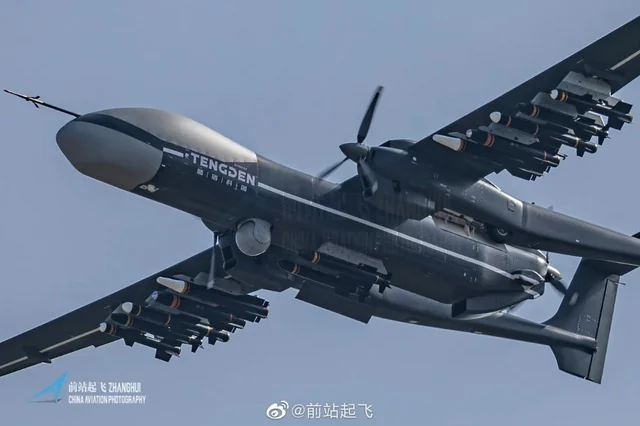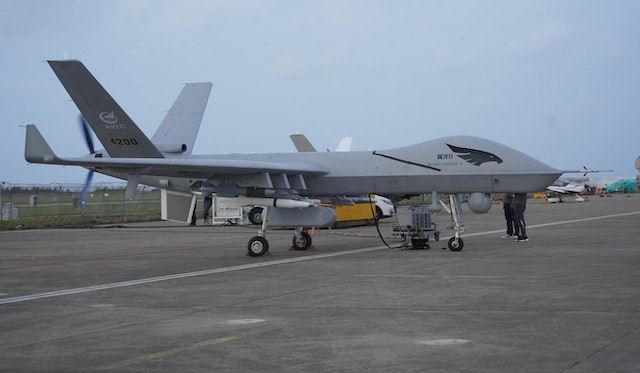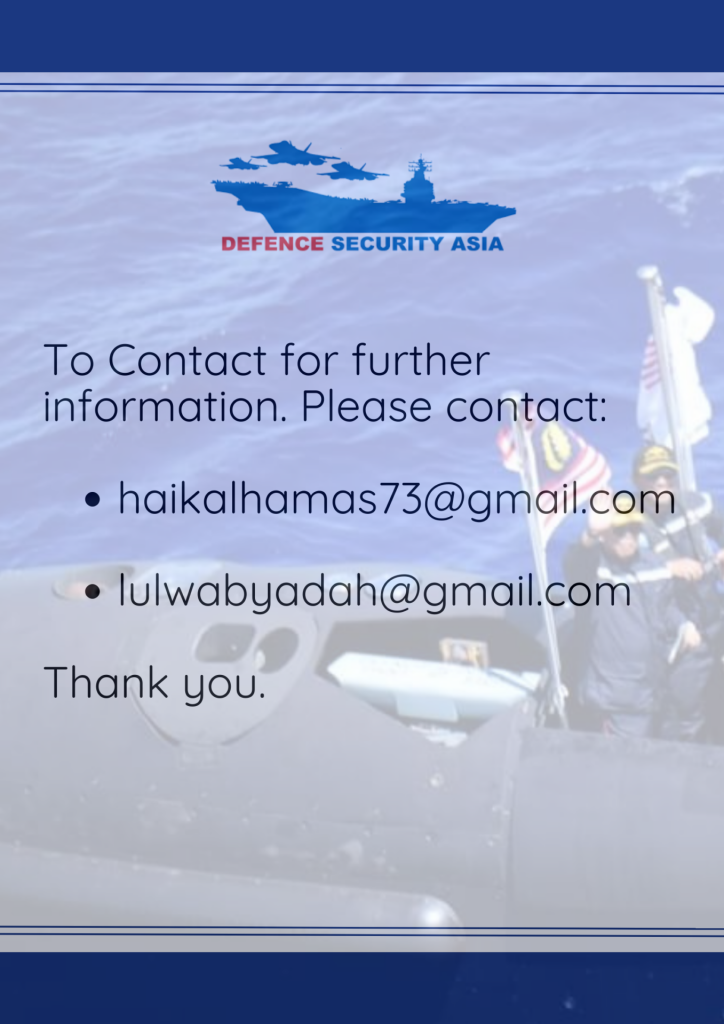As Western Ties Shift, Morocco Turns to China for Advanced Military Drones
This latest acquisition builds upon its existing fleet of Chinese-made Wing Loong II drones, underscoring the North African nation's shift toward expanding its military capabilities beyond traditional Western suppliers.
(DEFENCE SECURITY ASIA) – In a strategic move to diversify its defense procurement and deepen ties with China, Morocco has once again turned to Beijing for advanced unmanned aerial technology.
This latest acquisition builds upon its existing fleet of Chinese-made Wing Loong II drones, underscoring the North African nation’s shift toward expanding its military capabilities beyond traditional Western suppliers.
At the heart of this expansion is the TB-001K “Scorpion,” an advanced surveillance and strike drone developed by Sichuan Tengden Sci-Tech Innovation Co.
Featuring twin engines and a distinctive dual-tail design, the drone offers superior maneuverability, making it an agile asset for aerial operations.
With a staggering operational range of 6,000 km and an endurance of 35 hours, the TB-001K is built for sustained missions.
Its payload capacity surpasses 1,200 kg, allowing it to carry an array of precision-guided munitions, including air-to-ground missiles and bombs, making it a formidable force multiplier in Morocco’s arsenal.
Designed to operate at altitudes of 10,000 meters, the drone seamlessly integrates into both reconnaissance and strike missions, reinforcing Morocco’s air superiority in the region.

Upon delivery, the TB-001K is set to significantly enhance Morocco’s offensive capabilities, particularly amid escalating regional security threats.
However, details regarding the procurement volume, contract value, and delivery timeline remain undisclosed.
Morocco’s UAV fleet has already demonstrated its effectiveness in military operations across the Sahara, where it has played a pivotal role in neutralizing Polisario Front infiltrations.
These drones have relentlessly targeted separatist movements while asserting firm control over the buffer zones.
The country’s reliance on drones as a force multiplier became evident when the Royal Moroccan Armed Forces first deployed Wing Loong II drones in the Sahara, following their acquisition in 2015 during King Mohammed VI’s visit to China.
Morocco’s deepening defense relationship with Beijing has yielded a steady influx of advanced military hardware, including the Sky Dragon 50 long-range air defense system, AR2 multiple rocket launchers, and HJ-9A anti-tank guided missile systems.
Morocco’s military modernization extends far beyond UAVs.
The country is reportedly in advanced discussions with Hongdu Aviation Industry Corporation (HAIC) for the potential acquisition of the L-15 Falcon, a light fighter and advanced trainer aircraft.
This move comes as Morocco seeks to replace its aging fleet of Franco-German Alpha Jets, which have been in service for decades.
The L-15 Falcon, already in operation with the Zambian and Emirati air forces, offers state-of-the-art features, including supersonic capability, modern avionics, and enhanced payload capacity—a package that aligns with Morocco’s evolving air combat doctrine.

Morocco’s interest in the L-15 is fueled by its proven performance.
The lack of a French-built advanced trainer, coupled with the high costs and long wait times for the U.S.-made Boeing T-7A, makes the L-15 an attractive alternative.
The aircraft’s credibility has also surged following a landmark deal with the UAE, which is expected to procure up to 48 L-15 units—a major endorsement from one of the most influential air forces in the MENA (Middle East and North Africa) region.
For years, Morocco has strategically diversified its defense procurement, reducing its reliance on Western suppliers by integrating advanced Chinese-made weapon systems.
Its interest in the L-15 comes on the heels of previous acquisitions, including the Sky Dragon 50 (FD-2000B) long-range air defense system, AR2 multiple rocket launchers, HQ-9 (FD-2000B) long-range SAMs with semi-active radar homing (SARH) technology, HJ-9A anti-tank guided missiles, and the Wing Loong II drones.
This latest acquisition signals a decisive shift in Morocco’s defense posture—one that prioritizes modernization, capability enhancement, and strategic autonomy.
As the country continues to evolve as a regional military power, its growing partnership with China underscores a broader realignment of global defense alliances.
— DEFENCE SECURITY ASIA


